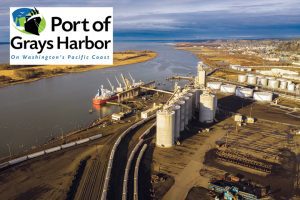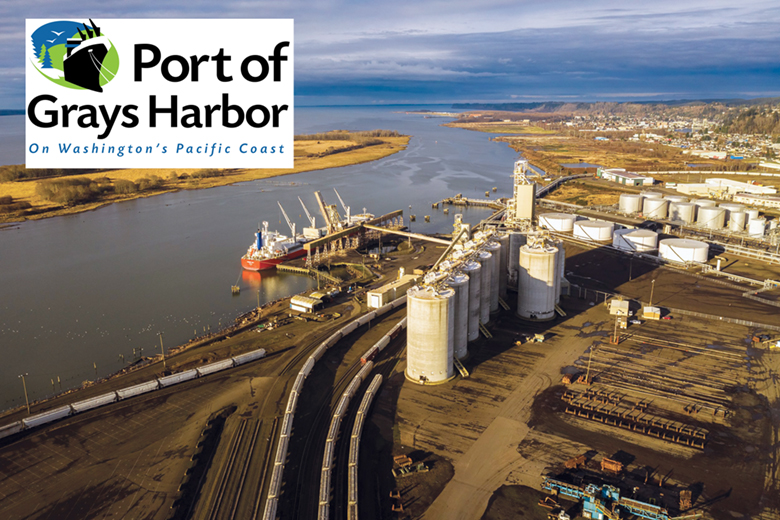
The Port of Grays Harbor’s biggest marine terminal customer, Nebraska-based U.S. soybean processor/refiner AGP, is making expansion plans for its Washington Coast facility, the port revealed in late March.
AGP’s Board of Directors recently approved plans to expand and enhance its facilities at the port, including more storage at its current export facility at Terminal 2 and a new, modern ship loader at Terminal 4.
“The port’s strategic location and access to rail have once again presented us with an incredible opportunity with a committed, strong private partner willing to further invest in our community,” POGH Executive Director Gary Nelson said. “We are committed to developing the infrastructure to support AGP’s growth and look forward to working with our local, tribal, state, and federal partners to make this happen.”
“We look forward to continuing and expanding our relationship (with the port) as we move forward with this project,” AGP Board Chairman Lowell Wilson added. “The project approved by the AGP Board will greatly increase railcar unloading speed, ship loading capacities, and add redundancy.”
This expansion means the port will need to broaden rail capabilities within the terminal complex to deal with added volume and curb traffic issues. The port plans to seek federal funding to pay for infrastructure improvements, according to the announcement.
AGP has said that it plans to begin operations in 2025.
“For 20 years, AGP has been an excellent partner with the Port of Grays Harbor and this major expansion and investment will further strengthen them as a leader in soybean meal exports,” Port Harbor Commission President Tom Quigg said. “Upon completion, this project will improve efficiency for AGP and its members, create additional freight capacity within our marine terminal complex and generate family-wage jobs for our local community.”

